Troubled Waters: The Salton Sea Project Part 2 – ‘Toxic Exposure’
It's a strange phenomenon when the average Californian can tell you more about the breathtaking beauty of Lake Tahoe or the dizzyingly good times at Lake Havasu than that state's largest lake. And in cases where they have heard of it, you would likely get complaints about the smell or the dead fish.
The Salton Sea, California's largest lake, starts at the southern end of the Coachella Valley, and it's unlike any lake you've seen before. This body of water in the Colorado Desert stretches 35 miles long, boasting mesmerizing views, and it's surface area is nearly big enough to swallow up the entire Coachella Valley. While the sights make for beautiful photos, authorities caution visitors against touching the water.
In late April, the California State Water Resources Control Board announced harmful cyanobacteria blooms had been discovered there – and that a dog had died after swimming in the water.
"Cyanobacteria harmful algal blooms can affect the skin, liver and nervous system of people and of dogs and livestock,'' the state water board said.
Officials added that not even boiling or filtering Salton Sea water would make it safe.
This latest bit of news only shores up the long-time reputation of the Salton Sea: that it's dirty, smelly, and a place of decay. According to Frank Ruiz, the Salton Sea Program Director of Audubon California, the sand is a smorgasbord of dead barnacle, clay, jelly- like substances, bacteria, and chemicals from agricultural runoff, petrochemicals and inflows from the Alamo River and New River, which carries pollution and sewage water from Mexico.
As the lake recedes, dust from the exposed toxic soil below, rich with farm pesticides, increases. Figures from a USC Environmental Health Centers and Aire Study estimate the amount of dust in the air will increase exponentially as the lake dries up, more than doubling from 2020 to 2025.
"It contains levels of heavy metals, arsenic, selenium, copper, DDT. And when these elements will become airborne, it has the potential to go through your lungs and your blood streams and even change your DNA, according to their study," said Ruiz, citing a preliminary study by UC Riverside.
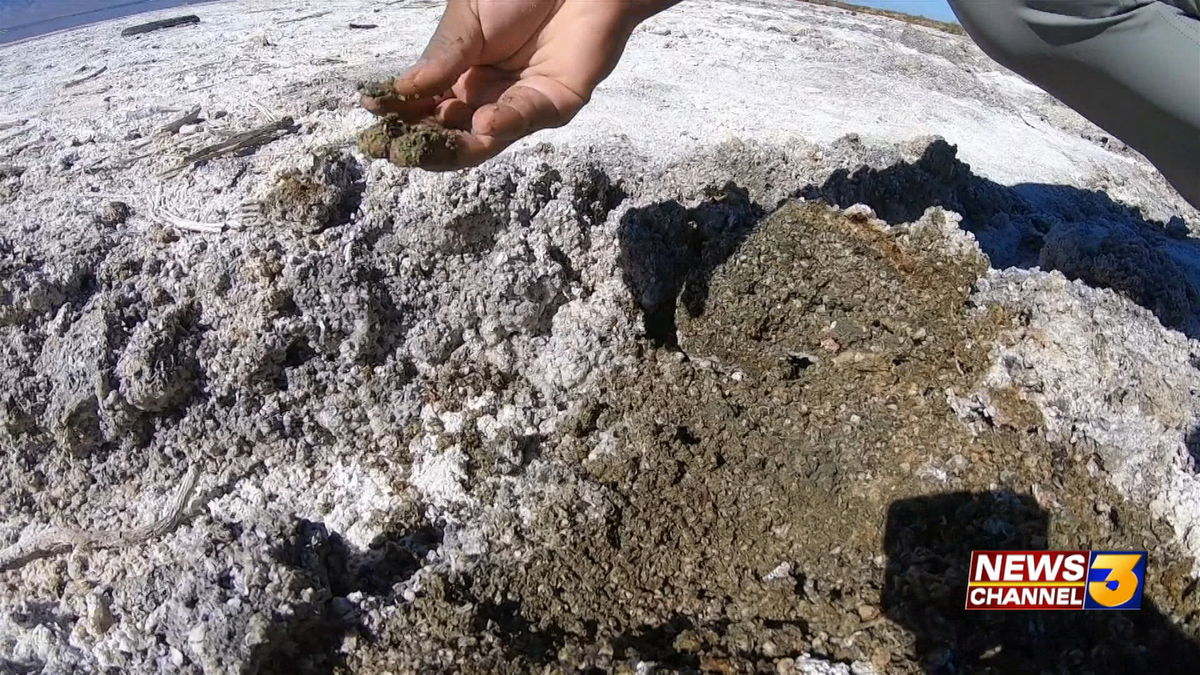
Years ago, the lake was teeming with life. Herons, pelicans, even flamingoes were part of more than 400 species of birds that could once be spotted grazing along the water. Today, the National Audubon Society says more than 150 of those species are gone, especially the bigger ones that feast on fish.

A more toxic lake means fewer fish which means more birds starving to death. Up to 95 percent of California's wetlands have been destroyed for human use, according to some regional studies.
Ruiz helps track birds and biodiversity with the National Audubon Society, strapping on boots similar to snowshoes because of slimy the sand can be.
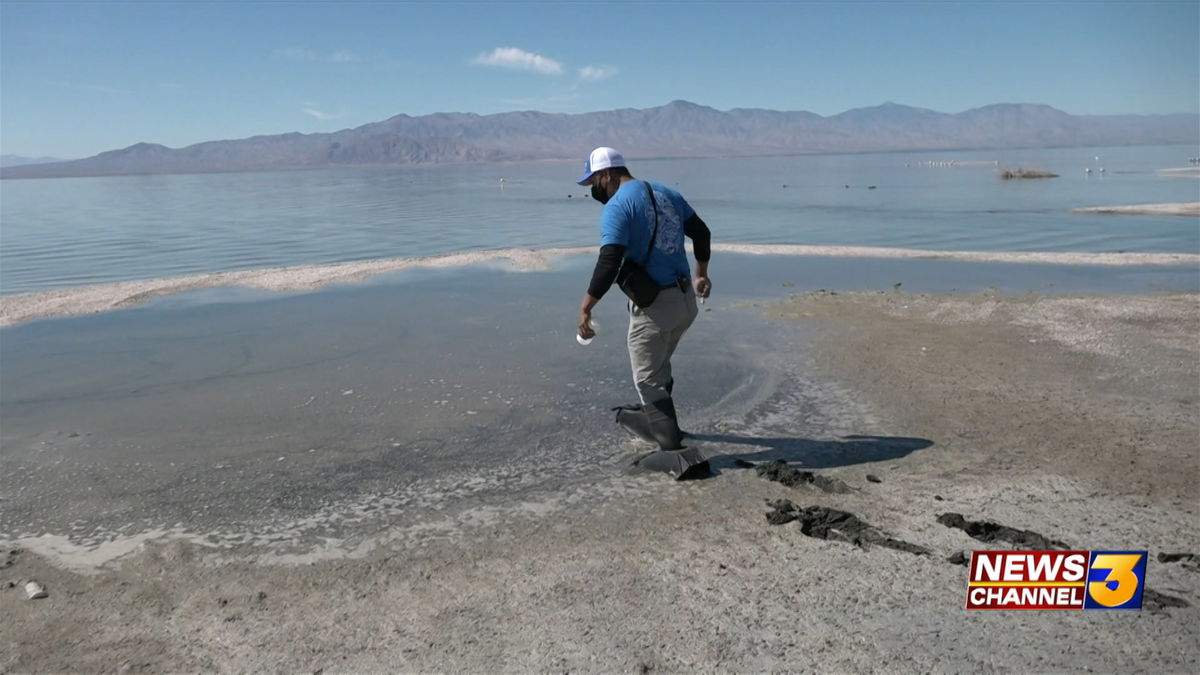
KESQ followed Ruiz on a monthly outing, collecting water samples to see how salinity is changing oxygen levels in the water, affecting whether fish and other creatures can survive in the lake.
"As the lake continues to shrink, it is becoming more salient. Then eventually, the salinity will become so thick that it will trap all the evaporation. So you know, the Salton Sea will not lose as much water, but at that point is going to be so brine, so salty," Ruiz said.
In the past 16 years, the lake has become almost 66% saltier, according to Bureau of Reclamation numbers. The sea is now more than twice as salty as the Pacific Ocean in some parts.
If we just leave it, it can turn into something devoid of life, like the Dead Sea, but with more bacteria. The Salton Sea is also drying up a record pace.
The water in the Salton Sea is disappearing for two reasons: first, the Imperial Irrigation District (IID) had been streaming enough water in through farm runoff to maintain the lake levels but that stopped in 2017 because of a water transfer agreement that redirected water to San Diego and other cities. So the water to replenish the lake was taken away. Two, Climate change has led to scorching, record-breaking temperatures in the desert, and that in turn, have led to faster evaporation at the lake. The Salton Sea is basically a bowl of water that, with time, gets more concentrated with salt and other questionable things. For decades, the lake's main refill source has been agricultural runoff.
There is a cautionary tale found in another California lake.
Owens Lake near Death Valley is a dried up lake bed environment, and it's now the largest manmade source of hazardous dust in the nation, according to the U.S. Geological Survey, emitting the dangerous particle PM10 as the wind blows.
Los Angeles County has spent more than $1 billion trying to suppress the dust, but it's still a disaster with hazardous dust levels ten times the acceptable standard.
Experts warn that Owens lake is a crystal ball of the Salton Sea's future if nothing is done, but with larger consequences; Owens Lake is much smaller than the Salton Sea.
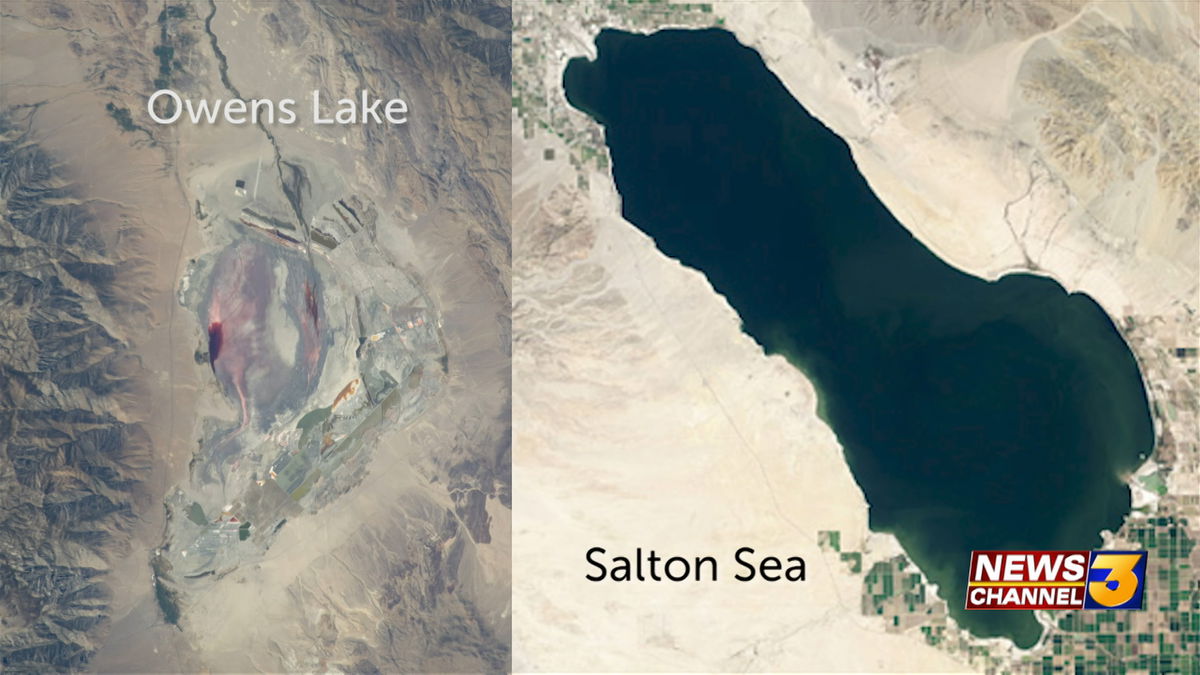
"Dust coming off the playa is significantly more toxic than regular desert dust. People are getting sicker over the last couple years because there is more exposed playa," said Kerry Morrison, founder of The Ecomedia Compass and former mayor of West Shores.
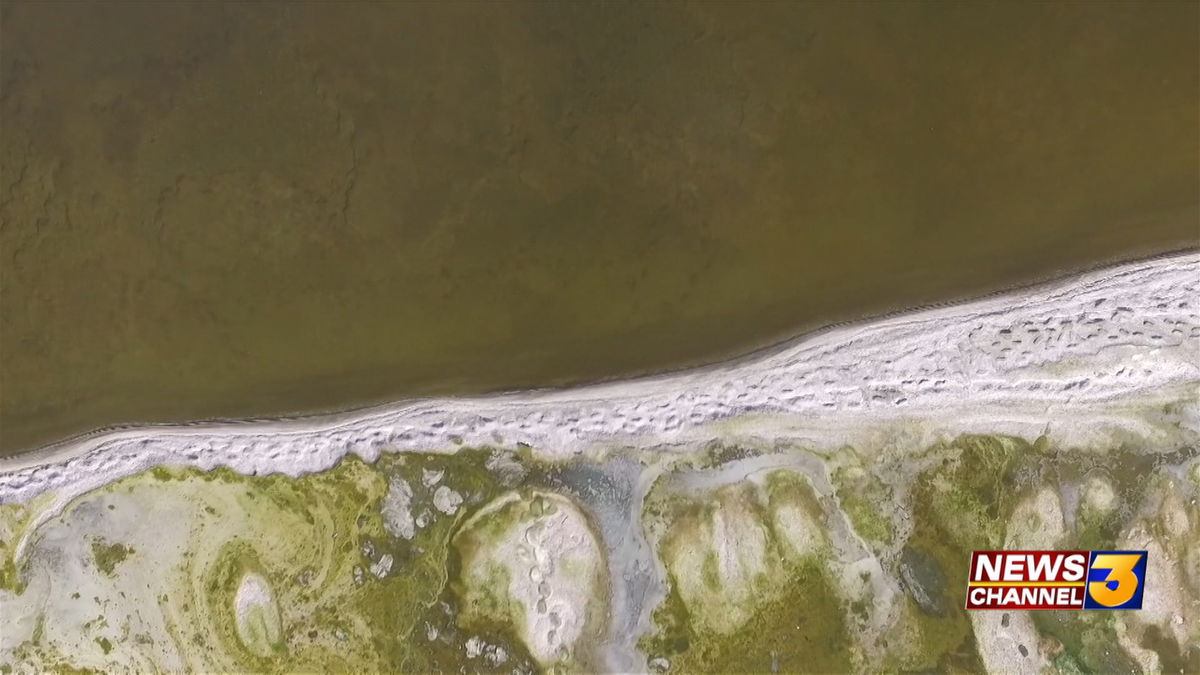
Already we're seeing the effects of the exposed playa in the surrounding towns.
"Sometimes my throat starts hurting when I start breathing," said Angel Juarez, a young resident of Mecca, a town located about 11 miles west of the Salton Sea.
Angel, along with his brothers, Josh and Alexis, live in Mecca and have been told their entire lives to go inside when the dust kicks up. Sometimes, the dust swirls can become a blinding storm.
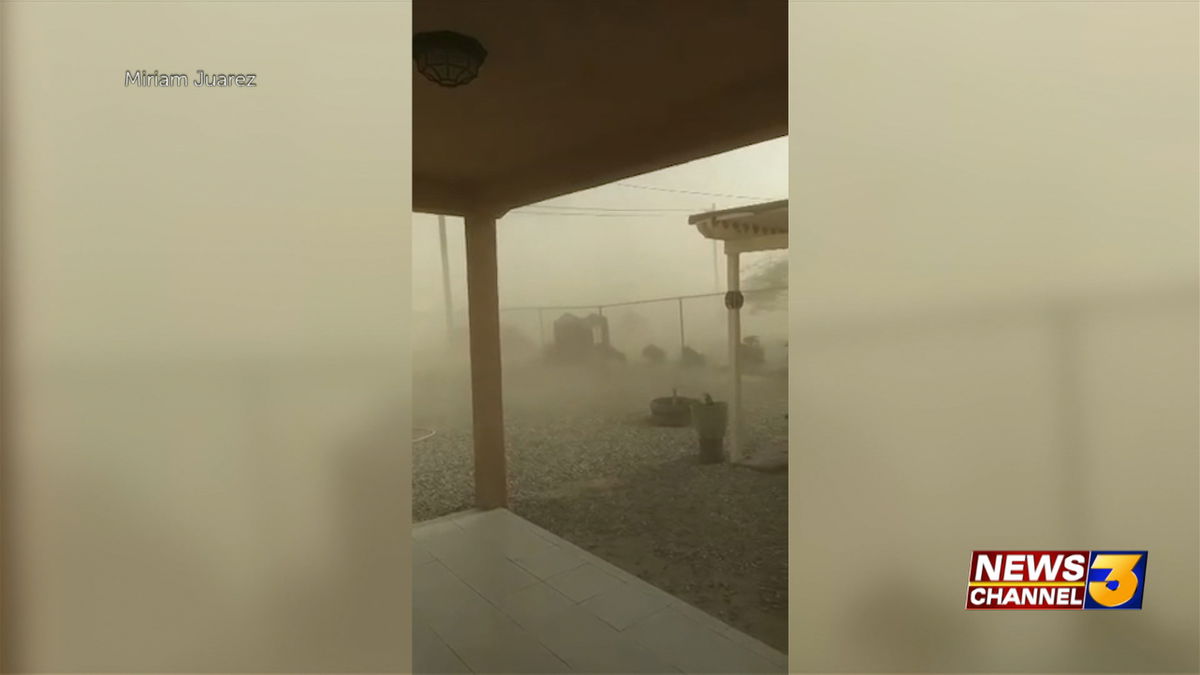
"I used to play soccer a lot, but my parents told me to stop playing too often because that's when I start breathing heavily," Josh said.
Josh and Angel have asthma, something families around the Salton Sea are used to seeing. PM10, a minute and dangerous particle, can be found in the exposed lakebed and dust at the lake.
"There's very fine dust particles, and the surrounding community already has the highest pediatric asthma hospitalization rate in the whole state of California. so, this is terrible for the public's health," said Congressman Dr. Raul Ruiz.
The rate of asthma hospitalizations for kids living at the southern end of the lake is more than double the state's number, according to the California Environmental Health Tracking Program. A 2019 USC study shows a whopping 35 percent of elementary school children in the area have breathing issues, more evidence the environment is contributing to health problems.
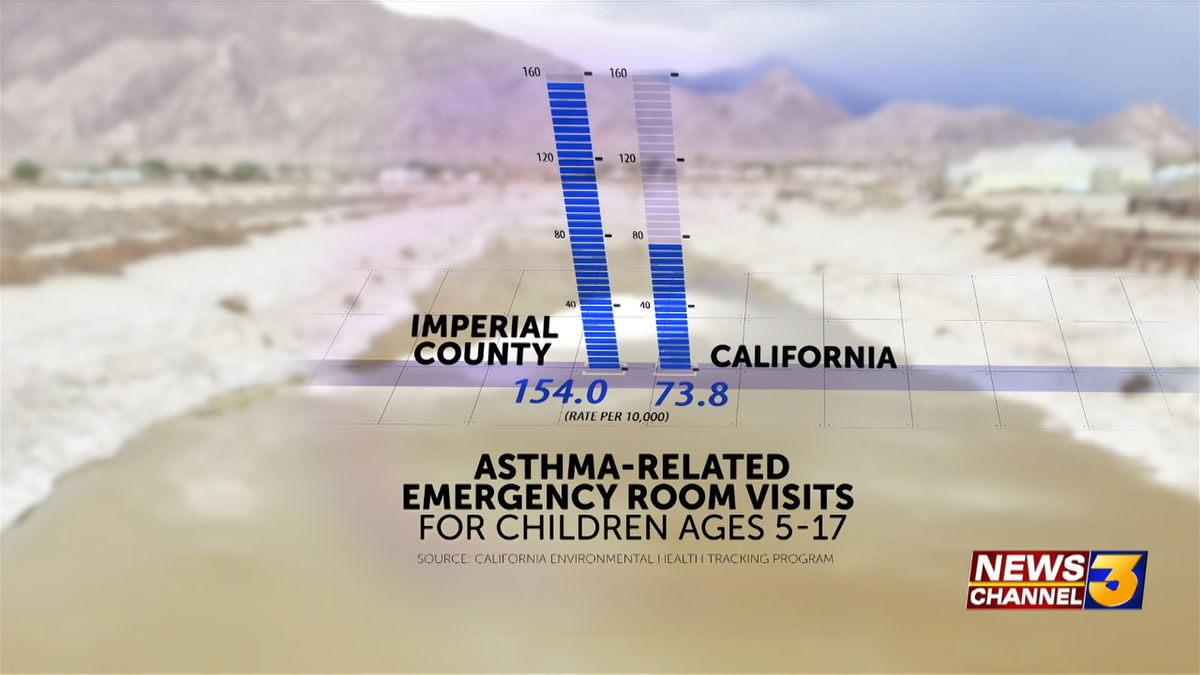
The number of good air days continue to disappear.
"I moved away and my breathing improved, but I have been back here for a few days and already I can feel my throat starting to hurt and breathing issues at night," said Juan Agredano, a former resident.
Politicians and water officials have historically been reluctant to spend the time and money fixing this, and to be fair, it is a mass undertaking to figure out how to get more water into the Salton Sea. But they've had decades and millions of dollars poured into this over the years with, so far, little to show for it at the lake.
And there hasn't been a lot of accountability.
The cost of doing nothing could be as much as $70 billion lost from health care bills, worsening air quality, property devaluation, and the loss of valuable ecological habitat.
While the birds and fish die, the people living around the lake struggle with what to do. For Alexis, the oldest brother, the answer is escape.
"My plans for when I graduate high school is to find a good job so I can get me and my family out of this place, if we can," Alexis said.
Make sure you tune in next Wednesday night, May 19, for part 3 of the Salton Sea Project.
Angela Chen investigates why past projects have stalled and why millions of dollars spent on the Salton Sea have not led to visible results.
Watch Troubled Waters: The Salton Sea Project: A Lake Languished, Next Wednesday at 6 on News Channel 3.
Click here to visit our Salton Sea Project section to learn more about the special report
